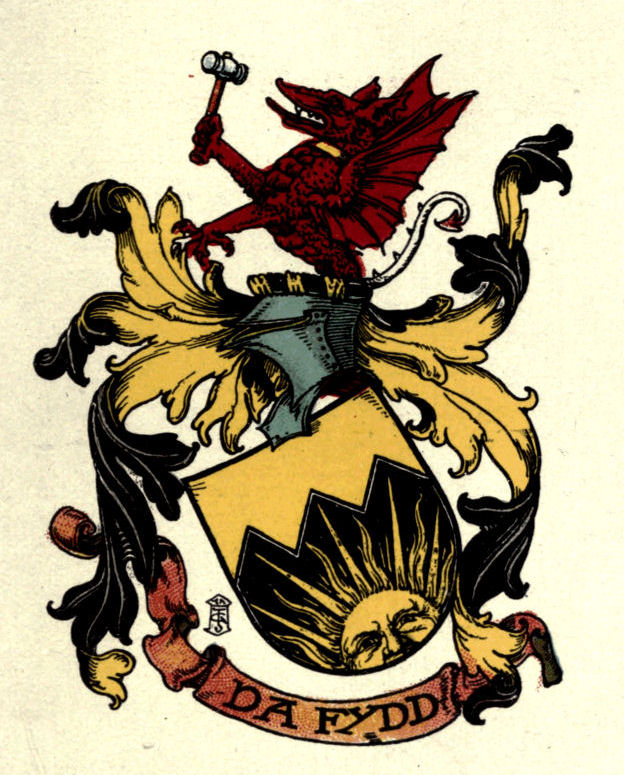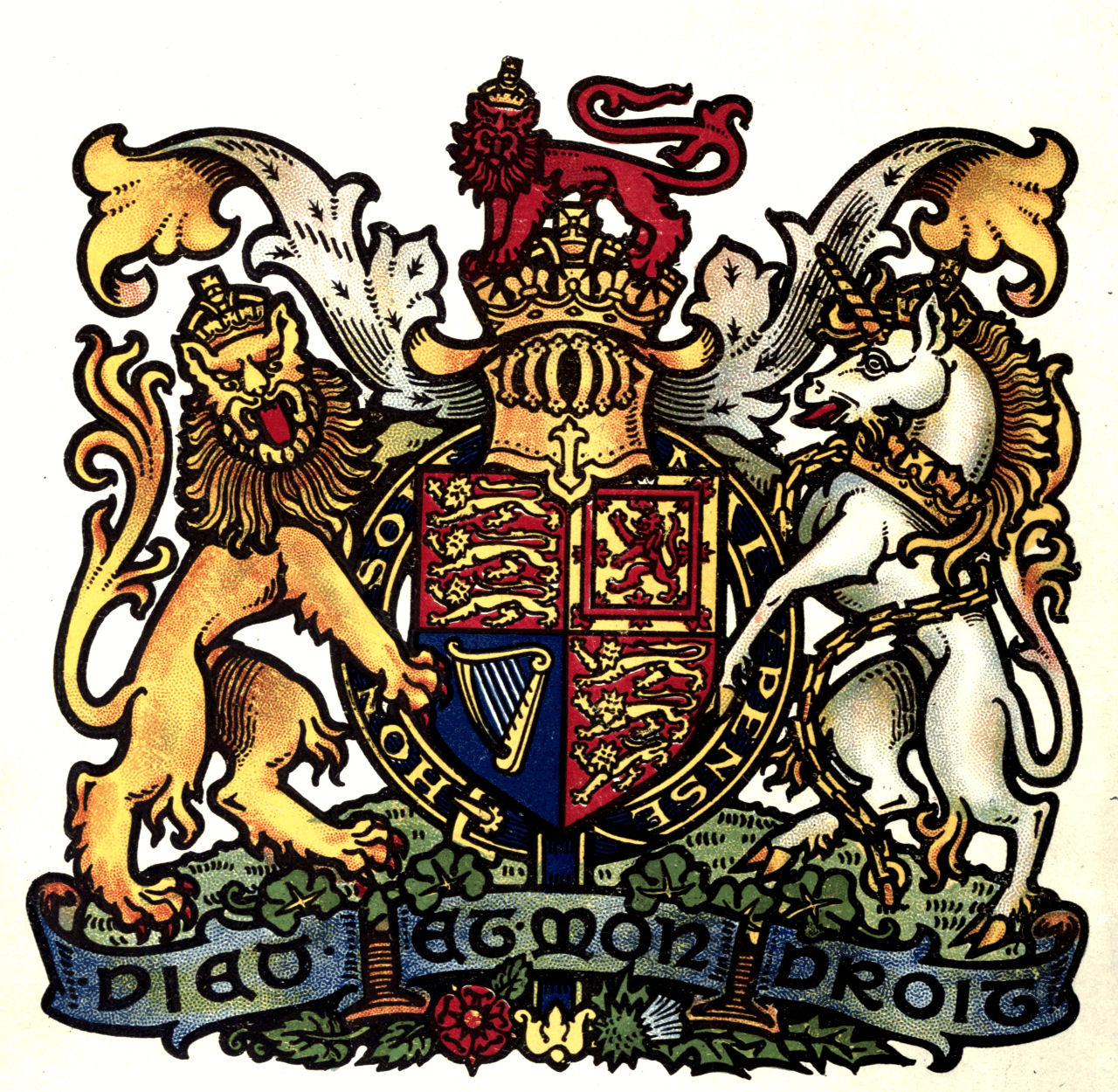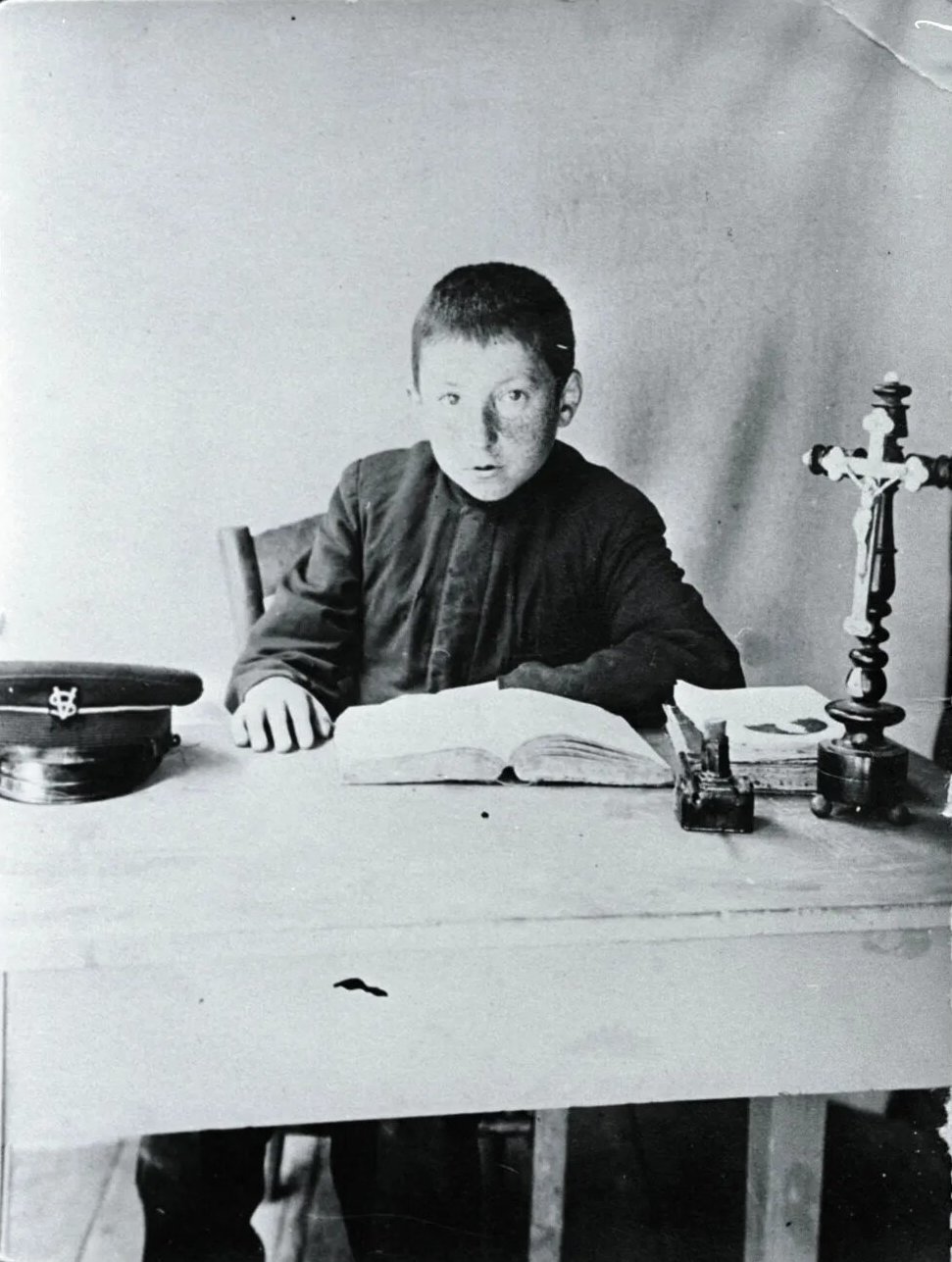|
Lion Of St. Mark
The Lion of Saint Mark, representing Mark the Evangelist, pictured in the form of a winged lion, is an aspect of the Tetramorph. On the pinnacle of St Mark's Cathedral he is depicted as holding a Bible, and surmounting a golden lion which is the symbol of the city of Venice and formerly of the Venetian Republic. It is also found in the symbol of the Greek Orthodox Patriarchate of Alexandria. It appears in both merchant and military naval flags of the Italian Republic. The Lion of Saint Mark is also the symbol of the award of the Venice Film Festival, the " Golden Lion", and of the insurance company Assicurazioni Generali. Symbolism The representation as a lion is derived from Mark's description of John the Baptist as "...The voice of the one who cries in the wilderness: Prepare Ye the way of the Lord, make straight his paths", which artists compared to a roaring lion. The wings come from Ezekiel 1:10 and the application of the prophet's vision of four winged creatures to the ... [...More Info...] [...Related Items...] OR: [Wikipedia] [Google] [Baidu] |
Courtyard Of The Doge's Palace (Venice) - Scala Dei Giganti - Lion Of Saint Mark
A courtyard or court is a circumscribed area, often surrounded by a building or complex, that is open to the sky. Courtyards are common elements in both Western and Eastern building patterns and have been used by both ancient and contemporary architects as a typical and traditional building feature. Such spaces in inns and public buildings were often the primary meeting places for some purposes, leading to the other meanings of court. Both of the words ''court'' and ''yard'' derive from the same root, meaning an enclosed space. See yard and garden for the relation of this set of words. In universities courtyards are often known as quadrangles. Historic use Courtyards—private open spaces surrounded by walls or buildings—have been in use in residential architecture for almost as long as people have lived in constructed dwellings. The courtyard house makes its first appearance ca. 6400–6000 BC (calibrated), in the Neolithic Yarmukian site at Sha'ar HaGolan, in ... [...More Info...] [...Related Items...] OR: [Wikipedia] [Google] [Baidu] |
Doge's Palace
The Doge's Palace ( it, Palazzo Ducale; vec, Pałaso Dogal) is a palace built in Venetian Gothic style, and one of the main landmarks of the city of Venice in northern Italy. The palace was the residence of the Doge of Venice, the supreme authority of the former Republic of Venice. It was built in 1340 and extended and modified in the following centuries. It became a museum in 1923 and is one of the 11 museums run by the Fondazione Musei Civici di Venezia. History In 810, Doge Agnello Participazio moved the seat of government from the island of Malamocco to the area of the present-day Rialto, when it was decided a ''palatium duci'' (Latin for "ducal palace") should be built. However, no trace remains of that 9th-century building as the palace was partially destroyed in the 10th century by a fire. The following reconstruction works were undertaken at the behest of Doge Sebastiano Ziani (1172–1178). A great reformer, he would drastically change the entire layout of the ... [...More Info...] [...Related Items...] OR: [Wikipedia] [Google] [Baidu] |
Flag Of The Republic Of Venice
The Flag of the Republic of Venice, commonly known as the Banner or Standard of Saint Mark (''stendardo di San Marco''), was the symbol of the Republic of Venice, until its dissolution in 1797. Its main charge was the Lion of Saint Mark, symbolizing Mark the Evangelist, the patron saint of Venice. A distinguishing feature of the flag is its six fringes, which were added to represent the original six sestiere of Venice. The fringes also serve to prevent damage being caused to the central section of the flag by wind. During times of peace, the Lion of Saint Mark was depicted alongside an open book. However, when the Republic was at war the Bible was replaced with the lion grasping an upright sword. During the corteo Dogale (), four banners of Saint Mark with different background colours, white, purple, blue, and red, were carried, with the one in front representing the state of the republic at that time (at peace, in a truce, in an alliance, at war, respectively). When at war, the ... [...More Info...] [...Related Items...] OR: [Wikipedia] [Google] [Baidu] |
Arthur Fox-Davies
Arthur Charles Fox-Davies (28 February 1871 – 19 May 1928) was a British expert on heraldry. His ''Complete Guide to Heraldry'', published in 1909, has become a standard work on heraldry in England. A barrister by profession, Fox-Davies worked on several notable cases involving the peerage, and also worked as a journalist and novelist. Quoted in Biography Arthur Charles Davies (known as Charlie) was born in Bristol, the second son of Thomas Edmond Davies (1839–1908) and his wife Maria Jane Fox, the daughter and coheiress of Alderman John Fox, JP. Fox-Davies was brought up from the early 1880s at Coalbrookdale in Shropshire, where his father worked for the Coalbrookdale Iron Company and had a house called "Paradise" which became his home in much of his adult life; his grandfather, Charles Davies of Cardigan in Wales, had been an ironmonger. He added his mother's maiden name to his own by deed poll on his nineteenth birthday in 1890, thereby changing his surname from Davie ... [...More Info...] [...Related Items...] OR: [Wikipedia] [Google] [Baidu] |
Halo (religious Iconography)
A halo (from the Greek , ; also known as a nimbus, aureole, glory, or gloriole) is a crown of light rays, circle or disk of light that surrounds a person in art. It has been used in the iconography of many religions to indicate holy or sacred figures, and has at various periods also been used in images of rulers and heroes. In the religious art of Ancient Greece, Ancient Rome, Christianity, Hinduism, and Buddhism among other religions, sacred persons may be depicted with a halo in the form of a circular glow, or flames in Asian art, around the head or around the whole body—this last one is often called a mandorla. Halos may be shown as almost any colour or combination of colours, but are most often depicted as golden, yellow or white when representing light or red when representing flames. Ancient Mesopotamia Sumerian religious literature frequently speaks of (loaned into Akkadian as ), a "brilliant, visible glamour which is exuded by gods, heroes, sometimes by kings, an ... [...More Info...] [...Related Items...] OR: [Wikipedia] [Google] [Baidu] |
Arthur Charles Fox-Davies
Arthur Charles Fox-Davies (28 February 1871 – 19 May 1928) was a British expert on heraldry. His ''Complete Guide to Heraldry'', published in 1909, has become a standard work on heraldry in England. A barrister by profession, Fox-Davies worked on several notable cases involving the peerage, and also worked as a journalist and novelist. Quoted in Biography Arthur Charles Davies (known as Charlie) was born in Bristol, the second son of Thomas Edmond Davies (1839–1908) and his wife Maria Jane Fox, the daughter and coheiress of Alderman John Fox, JP. Fox-Davies was brought up from the early 1880s at Coalbrookdale in Shropshire, where his father worked for the Coalbrookdale Iron Company and had a house called "Paradise" which became his home in much of his adult life; his grandfather, Charles Davies of Cardigan in Wales, had been an ironmonger. He added his mother's maiden name to his own by deed poll on his nineteenth birthday in 1890, thereby changing his surname from Davie ... [...More Info...] [...Related Items...] OR: [Wikipedia] [Google] [Baidu] |
Venetian Language
Venetian, wider Venetian or Venetan ( or ) is a Romance language spoken natively in the northeast of Italy,Ethnologue mostly in the Veneto region, where most of the five million inhabitants can understand it. It is sometimes spoken and often well understood outside Veneto: in Trentino, Friuli, the Julian March, Istria, and some towns of Slovenia and Dalmatia ( Croatia) by a surviving autochthonous Venetian population, and Brazil, Argentina, Australia, Canada, the United States, the United Kingdom, and Mexico by Venetians in the diaspora. Although referred to as an "Italian dialect" ( vec, diałeto, links=no, it, dialetto) even by some of its speakers, the label is primarily geographic. Venetian is a separate language from Italian, with many local varieties. Its precise place within the Romance language family remains somewhat controversial. Both Ethnologue and Glottolog group it into the Gallo-Italic branch. Devoto, Avolio and Ursini reject such classification ... [...More Info...] [...Related Items...] OR: [Wikipedia] [Google] [Baidu] |
Second World War
World War II or the Second World War, often abbreviated as WWII or WW2, was a world war that lasted from 1939 to 1945. It involved the vast majority of the world's countries—including all of the great powers—forming two opposing military alliances: the Allies and the Axis powers. World War II was a total war that directly involved more than 100 million personnel from more than 30 countries. The major participants in the war threw their entire economic, industrial, and scientific capabilities behind the war effort, blurring the distinction between civilian and military resources. Aircraft played a major role in the conflict, enabling the strategic bombing of population centres and deploying the only two nuclear weapons ever used in war. World War II was by far the deadliest conflict in human history; it resulted in 70 to 85 million fatalities, mostly among civilians. Tens of millions died due to genocides (including the Holocaust), starvat ... [...More Info...] [...Related Items...] OR: [Wikipedia] [Google] [Baidu] |
Julian March
Venezia Giulia, traditionally called Julian March (Serbo-Croatian, Slovene: ''Julijska krajina'') or Julian Venetia ( it, Venezia Giulia; vec, Venesia Julia; fur, Vignesie Julie; german: Julisch Venetien) is an area of southeastern Europe which is currently divided among Croatia, Italy, and Slovenia.''Contemporary History on Trial: Europe Since 1989 and the Role of the Expert Historian'' by Harriet Jones, Kjell Ostberg, Nico Randeraad p. 155 The term was coined in 1863 by the Italian |
San Marco Evangelista In Agro Laurentino
San Marco Evangelista in Agro Laurentino is a Catholic church in Rome, Italy on the Piazza Giuliani e Dalmati in the Giuliano-Dalmata quarter. The dedication to Saint Mark alludes to the presence in the area of Istrian and Dalmatian refugees (who fled the Julian March after the Second World War), as does the Lion of St. Mark above the portico. It was erected between 1970 and 1972 to plans of Ennio Canino and Cardinal Vicar Angelo Dell'Acqua consecrated it on 29 May 1972. Two popes have visited it: Pope Paul VI in April 1973 and Pope John Paul II in January 1984. Inside the church is a bronze Madonna by Perrotta and a bronze crucifix by U. Montalbano. In the crypt is a series of mosaics depicting the patron saints of the native nations of the Giuliano-Dalmati, i. e., northeastern Adriatic, refugees. The decree of Cardinal Vicar Francesco Marchetti Selvaggiani, ''Pastoris vigilantis'' established the church as a parish church on 9 March 1950. Since 1973 it has been the seat of ... [...More Info...] [...Related Items...] OR: [Wikipedia] [Google] [Baidu] |
Giuliano-Dalmata
Giuliano-Dalmata is the 31st ''quartiere'' of Rome, identified by the initials Q. XXXI. Its name refers to the Julian, Istrian and Dalmatian refugees that settled there in the postwar period. History Born in the 1930s as ''Villaggio Operaio E42'', to house the workers employed in the construction of the World Expo 42, and abandoned during the Second World War, in the postwar period the borough remained uninhabited, until in 1947 twelve families of julian refugees settled in the area around the current Piazza Giuliani e Dalmati and renamed the settlement Villaggio Giuliano. The official inauguration of the new district took place on 7 November 1948, when the old workers dormitories were restored and readjusted for residential use, and consigned to the refugees, in the presence of the then Secretary of the Council of Ministers Giulio Andreotti and of Mrs. De Gasperi, the wife of the then Prime Minister Alcide De Gasperi. During the ceremony, in the little chapel of the nei ... [...More Info...] [...Related Items...] OR: [Wikipedia] [Google] [Baidu] |
Pope John Paul I
Pope John Paul I ( la, Ioannes Paulus I}; it, Giovanni Paolo I; born Albino Luciani ; 17 October 1912 – 28 September 1978) was head of the Catholic Church and sovereign of the Vatican City from 26 August 1978 to his death 33 days later. His reign is among the shortest in papal history, resulting in the most recent year of three popes and the first to occur since 1605. John Paul I remains the most recent Italian-born pope, the last in a succession of such popes that started with Clement VII in 1523. Before the papal conclave that elected him, he expressed his desire not to be elected, telling those close to him that he would decline the papacy if elected, but, upon the cardinals' electing him, he felt an obligation to say yes. He was the first pontiff to have a double name, choosing "John Paul" in honour of his two immediate predecessors, John XXIII and Paul VI. He explained that he was indebted to John XXIII and to Paul VI for naming him a bishop and a cardinal, respecti ... [...More Info...] [...Related Items...] OR: [Wikipedia] [Google] [Baidu] |

.jpg)


.jpeg/1200px-Gandhara_Buddha_(tnm).jpeg)


